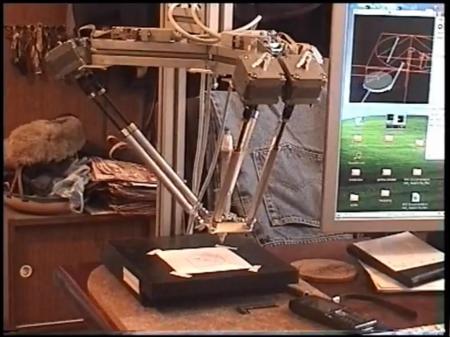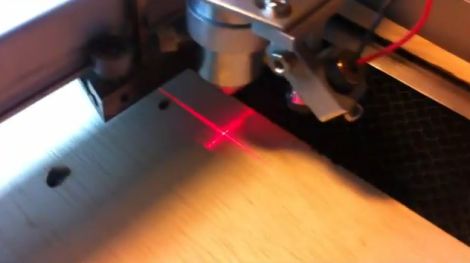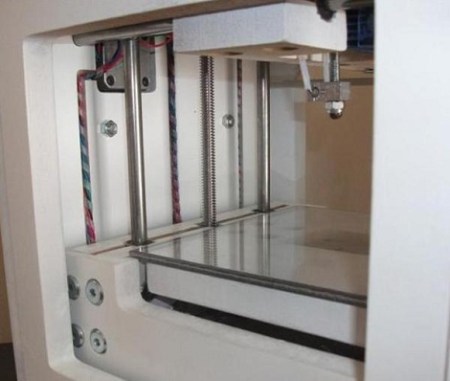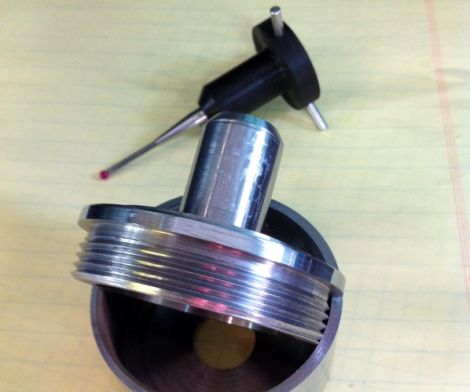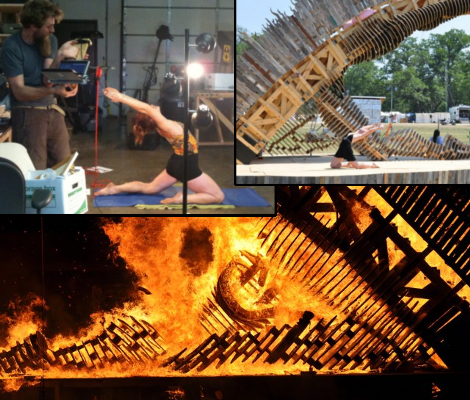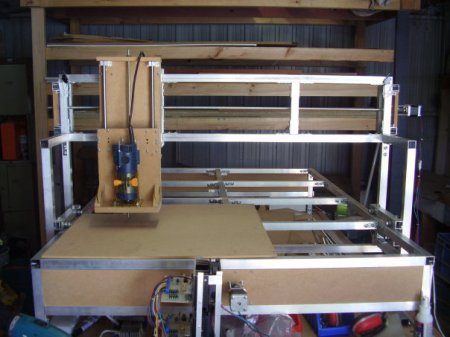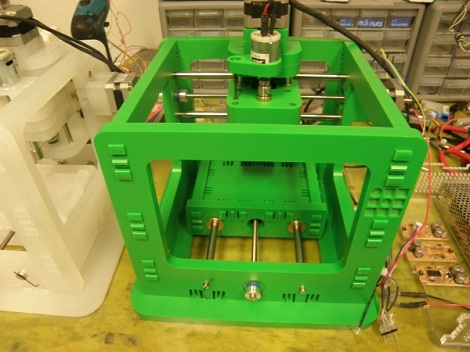Although some may have heard of a machine like this, the CNC tripod remains an unknown machine to many in the engineering word. This particular machine is set up as a plotter, drawing incredibly straight lines, shapes, and letters.
The machine appears to have 6 servo motors, 3 working as pairs. This would simplify control and allows the pen to be held at a perpendicular angle to the paper. Once could envision this being used with, instead of a pen, a spindle and mill. Instead of the traditional movement of a CNC mill or router, this could be used to cut out complex shapes.
Additionally, if the servos were not driven in 3 tandem pairs, but were all controlled independently, it should be possible to twist the tool in a controlled angular direction. This would add an extra axis of control to an already robust CNC setup. It will be exciting to see how this technology develops in the future. Until then, check out the video after the break: Continue reading “Tripod CNC Plotter”

